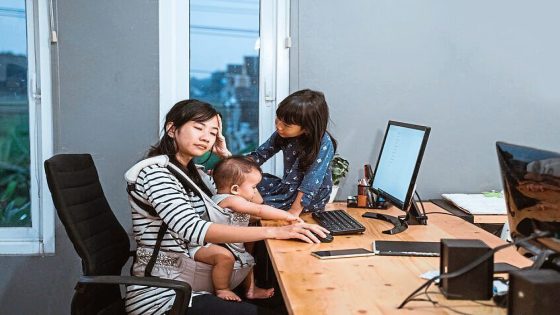PETALING JAYA: Noor Wahida Abd Ghani had been working for 17 years but at the age of 36, she decided to quit her corporate job as an assistant manager to raise her daughter.
She had no plans to return to a nine-to-five job.
“I was only seeing my daughter in the early mornings and late at night. My work often stretched until late and my daughter was staying long hours at the babysitter’s.
“On weekends when I had work events, she would be with her grandparents or my siblings who would help take care of her.
“I missed many precious milestones when she was growing up and I couldn’t bear the thought of losing any more time with her,” she said.
Noor Wahida, who is now in her 40s, started a business with her family in the automative industry.
“Now I get to spend more time with my family and I feel more fulfilled,” she said.
Wahida is among the growing number of women in their mid-40s to mid-50s rejoining the labour force after a career break, and they prefer more flexibility to fulfil their care work demands.
According to the Statistics Department’s Labour Force Survey, women’s participation in the labour force went up in the last quarter of last year, especially for women between the ages of 45 and 54.
A year-on-year comparison of the quarterly data shows women in the 45-54 age bracket recording the biggest hike of 12.4% in terms of employment, at 1.1 million employed women in the last quarter (Q4) of 2023, compared with 942,000 in Q4 2022.
Experts said many women in this group are coming back after having children.
“Many of these women exited the workforce during their childbearing years, especially when employers were not supportive of working mothers,” said Malaysian Research Institute on Ageing (MyAgeing) senior research officer Chai Sen Tyng.
Due to this negative experience, they would leave for good, or try to re-enter the workforce when their children were older.
Chai said many women in this age group may prefer freelance or less formal or stable jobs as they cannot commit to an inflexible 9-to-5 job.
He said older women who want to get back to working full-time might need retraining or a short period of adjustment.
“These disruptions affect women differently, but in general older workers face some form of discrimination due to their age,” he said.
Their plight highlights an underlying gender gap in Malaysia’s labour market.
According to the Statistics Department’s 2022 figures, women make up 47.3% of the country’s working age population but make up only 38.9% of its labour force.
Khazanah Research Institute (KRI) in a report “The Malaysian Workforce: A Changing Landscape” found that women’s participation in the workforce peaks at ages 25-29, then declines in all subsequent age groups.
This is termed as the “disappearing women” phenomenon, where there are increasingly fewer women in the labour force across age groups, whilst men continue to maintain full participation.
“Women’s presence gradually erodes as they move up the age ladder. This will affect gender equality in occupational opportunities,” the KRI report noted.
MyAgeing’s Chai said flexibility is key to encouraging the participation of women of all ages in the workforce.
“For women at least, employers need to be supportive of their workers’ life goals and help them find workarounds that might actually boost productivity rather than negatively affecting it,” he added.
The gender stereotype which puts the burden of childcare and housework squarely on women poses a major obstacle for those who want to rejoin the workforce, said Universiti Malaya’s gender studies senior lecturer Dr Lai Suat Yan.
“Women with children have to bear with more housework and their care burden will worsen if they have to take care of the elderly or the differently-abled in the family as well.”
As such, structural support through measures such as childcare facilities and work flexibility is important.
“In the long term, it is also necessary to have a change in the mindset in terms of the sharing of the care responsibilities between wife and husband in the family.
“And of course, a much longer paternity leave is also needed than the present seven days,” she said.
Human resource expert Usha Devi said many mothers in their 40s with older children are eager to return to the workforce as they no longer need to worry about finding childcare.
Employers, she said, should consider flexibility in terms of working hours, schedules or benefits to attract this group.
“Some women who are parents might prefer to only work the afternoon shifts, or four longer days with three days off, or the older group might only prefer early mornings.”
She said organisations could tweak their work schedule to attract different groups of women.
“It doesn’t have to be just working from home. With flexible work arrangements, this could mean different work hours,” said Usha Devi.
Universiti Kebangsaan Malaysia’s Critical Media Studies Assoc Prof Dr Jamaluddin Aziz said mothers and married women are not the only ones making a comeback to the job market.
Some rejoin the labour force after furthering their studies or trying out their hand at starting their own business.
Regardless of their circumstance and motivation, organisations need to provide a structure that would allow women at any level to progress, he said.
Source Agencies


